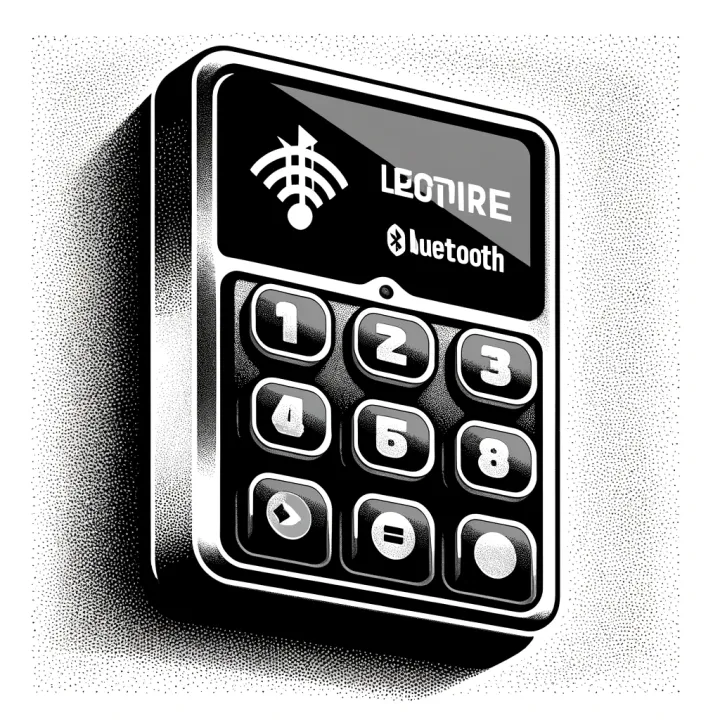Lock It Up: How to SSL Your Self-Storage Site Without Losing Your Lock!
Unlock the secret to web security 🗝️! Learn how to validate your domain and secure your site faster than locking up a storage unit. #SSL #WebSecurity

Demystifying Domain Validation for Self-Storage Websites: Why It Matters and How to Do It Right
In today's digital age, the self-storage industry, like many others, relies heavily on online presence. A significant part of this presence is ensuring that your website is secure and trusted by potential customers. This is where SSL certificates come into play, and a crucial step in obtaining these certificates is domain validation. Let's break down this process, explain why it's so important for self-storage websites, and provide a roadmap for getting it right.
Understanding SSL Certificates
Before we dive into domain validation, let's cover the basics of SSL certificates. SSL stands for Secure Sockets Layer, and it's essentially a digital passport for your website. It establishes a secure connection between a visitor's browser and your website, ensuring that all data passed between them remains private. Think of it as sealing a letter in an envelope before sending it through the mail. The SSL certificate is the seal that tells users their information is safe with you.
The Role of Domain Validation
Domain validation (DV) is the process by which a Certificate Authority (CA) - the organization that issues SSL certificates - verifies that the person requesting the certificate actually owns the domain they claim to. It's akin to proving your identity before being issued a passport. For self-storage businesses, this step is crucial because it directly impacts your website's credibility and security.
Why Domain Validation Matters
- Trust: When potential customers visit your website to check prices or book a storage unit, seeing the padlock icon in their browser's address bar reassures them that their information is secure. This trust is fundamental in converting visitors into customers.
- Security: DV helps prevent cybercriminals from obtaining SSL certificates for domains they don't own, which they could use to create convincing phishing sites. These are fake websites designed to steal personal information by masquerading as legitimate businesses.
- SEO Benefits: Search engines, like Google, favor secure websites. Having a validated SSL certificate can improve your site's ranking, making it easier for potential customers to find your self-storage facility online.
How to Navigate Domain Validation Successfully
Now that we understand the importance of DV, let's look at how to navigate this process successfully:
Step 1: Choose the Right Certificate Authority
Select a reputable CA that offers support and guidance throughout the SSL certificate application process. This choice can make the subsequent steps smoother and more straightforward.
Step 2: Generate a CSR
The first technical step is generating a Certificate Signing Request (CSR) on your web server. This request contains information about your website, such as the domain name, and is used by the CA to create your SSL certificate. It's similar to filling out an application form for a passport.
Step 3: Submit Your CSR and Choose Domain Validation
Once you have your CSR, you submit it to your chosen CA and select domain validation as your verification method. This is the point where you prove your ownership of the domain.
Step 4: Verify Ownership Through Email or DNS
The CA will give you a choice on how to prove your domain ownership. Typically, this involves either:
- Email Verification: The CA sends an email to the administrative contact for the domain with a verification link. This method is straightforward - click the link, and you're done. It's like responding to a security question only you would know the answer to.
- DNS Verification: The CA asks you to add a specific TXT record to your domain's DNS settings. This record is a piece of text that proves to the CA that you control the domain's DNS records. Imagine you're asked to hang a sign with a specific message in your store window; if the CA can see the sign, they know the store is yours.
Step 5: Install Your SSL Certificate
Once the CA verifies your domain ownership, they'll issue your SSL certificate. The final step is installing this certificate on your server. This process varies depending on your hosting environment, but it essentially involves uploading the certificate files and configuring your web server to use them. Think of it as putting the seal on your envelope; now, every message you send (or receive) is secure.
Common Pitfalls and How to Avoid Them
Navigating the DV process can be smooth, but here are some common pitfalls and how to avoid them:
- Incorrect DNS Configuration: Ensure your DNS records are correctly configured before starting the DV process. Mistakes here can delay or derail your SSL certificate issuance.
- Email Issues: If choosing email verification, make sure the administrative email for your domain is correct and accessible. Sometimes, these emails are set to generic addresses that aren't regularly monitored.
- Expired Domains: Your domain must be current (not expired) to undergo DV. It's a simple point, but one that's often overlooked.
Conclusion
Domain validation is a critical step in securing your self-storage website with an SSL certificate. It not only enhances your website's security but also plays a significant role in establishing trust with potential customers and improving your site's visibility through better search engine rankings. By understanding and properly navigating the domain validation process, you can ensure that your self-storage business stands out as a secure and reliable choice for consumers.
To recap, the key steps in the domain validation process involve selecting a reputable Certificate Authority, generating a CSR, choosing your method of domain verification (either via email or DNS), and finally installing the issued SSL certificate on your server. Along the way, be mindful of common pitfalls such as incorrect DNS configurations, email verification issues, and the status of your domain registration.
Leveraging Domain Validation for Business Growth
Beyond the technical aspects, domain validation and the subsequent installation of an SSL certificate can be leveraged as part of your marketing strategy. Highlighting your website's security through social media, on your website itself, or in email communications can reassure current and potential customers about the safety of their data. It's a signal that you take their privacy seriously and are committed to providing a secure online experience.
Staying Up-to-Date
The digital landscape is constantly evolving, and with it, the standards for web security. Keeping abreast of changes in SSL/TLS protocols, CA policies, and domain validation requirements is crucial for maintaining your website's security and trustworthiness. Consider subscribing to cybersecurity newsletters, attending relevant webinars, and participating in forums dedicated to web administration and security. This ongoing education will not only help you stay ahead of potential security threats but also enable you to take advantage of new technologies and practices that can benefit your business.
Empowering Your Team
If you have a team managing your self-storage facility's website, ensure they are trained and knowledgeable about the importance of SSL certificates and the domain validation process. Empowering your team with this knowledge can lead to faster resolution of issues, improved website uptime, and a better overall customer experience.
Final Thoughts
In the world of online business, security is not just a technical requirement; it's a cornerstone of customer trust and business integrity. For self-storage facilities, where customers entrust you with their possessions, mirroring that trust through a secure online presence is paramount. By successfully navigating the domain validation process and securing your website with an SSL certificate, you're not just protecting data; you're building a foundation of trust that can support the growth and success of your business.
In conclusion, while the process may seem daunting at first, domain validation is a manageable and crucial step towards securing your online presence. By following the outlined steps and being aware of potential pitfalls, you can ensure a smooth process that enhances your website's security and, by extension, your business's reputation. Remember, in the digital age, a secure and trusted website is not just an option; it's a necessity for attracting and retaining customers in the competitive self-storage industry.


